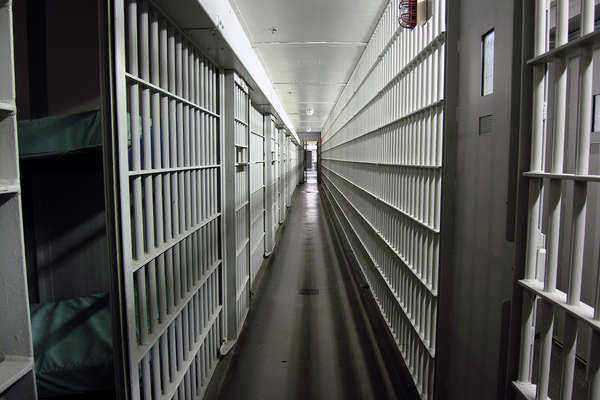2 Types of Solicitor



On October 10th and 12th, the Federal Bureau of Investigation asked for the public’s assistance in three different murders in the Albuquerque area. The public is encouraged to provide the FBI with any information that may help the investigations of the murders.
The FBI and the Navajo Nation Division of Public Safety asked the public for information concerning the death of a Shiprock teenager. The teenagers name is Brittany Hadley, and she was 19 years old at the time of her death. She was found around 4 a.m. on September 26, 2012 at mile marker 30 along U.S. 64 in Hogback, New Mexico. The FBI believes she may have been a victim of a hit-and-run.
The FBI is asking for information from witnesses or anyone who saw suspicious behavior on the night of September 25 or the morning of September 26.
The FBI and the Pueblo Zuni Police Department are also asking for information about the death of a Zuni man who was 48 years old. Marty Fabian Mahkee’s body was found at mile marker 30.3 along Highway 53 between Ramah and Zuni on August 31, 2012 around 4 a.m. A witness saw him walking along the highway about half an hour before he died. He is believed to be the victim of a hit-and-run accident.
The last investigation involves the death of Dale Johnson. The FBI reports he was missing for over a week before his body was found near Mescalero, New Mexico on July 8, 2011. His body was found in the remote mountainous area north of the Feast or Ceremonial Grounds on the Mescalero Apache Reservation. The FBI is still investigating the man’s death and asking the public for helpful information.
If you have information about any of these deaths, you need to call the Albuquerque FBI at 505-889-1300 immediately.
Sources: Federal Bureau of Investigation






On November 20, 2012, the US Attorney’s Office for the District of New Jersey announced Andrew Auernheimer was convicted for breaching AT&T’s servers and stealing email address and other personal information of 120,000 iPad 3G users. Auernheimer gave the stolen information to an Internet magazine.
Court documents indicate that AT&T linked all iPad 3G user’s email addresses to an Integrated Circuit Card Identifier (ICC-ID) number when a person registered their iPad. When AT&T’s website recognized the number and email address, the person was directed to a faster and more user-friendly website.
Hackers soon discovered that AT&T’s website was displayed in the plain text of the site URL. The hackers then wrote a script called “iPad 3G Account Slurper” and used it in AT&T servers. The website was attacked for several days, and from June 5, 2010 to June 9, 2010, the hackers stole about 120,000 ICC-IDs and email addresses.
The information was immediately sold to the website called Gawker, and the information was published in a dedacted form. Famous people’s email addresses were hacked including Diane Sawyer, Harvey Weinsten, New York Mayor Michael Bloomberg, and Rahm Emanuel—the former White House Chief of Staff.
Auernheimer was convicted of accessing AT&T’s servers without authorization and disclosing the information to Gawker. He faces up to five years in prison and a fine up to $250,000 for each charge. The co-defendant, Daniel Spitler, was convicted of the same charges and is currently awaiting sentencing as well.
Special agents with the FBI under the direction of Michael B. Ward, Special Agent in Charge in Newark, led the investigation. Numerous other agencies helped during the investigation and prosecution. Executive Assistant U.S. Attorney Michael Martinez and Assistant U.S. Attorney Zach Intrater with the Computer Hacking and Intellectual Property Section under the U.S. Attorney’s Economic Crimes Unit led prosecution.
Source: Federal Bureau of Investigation

On November 9, 2012, the Department of Justice reported that Frank Marfo was sentenced to life in prison for conspiracy to murder a bank fraud investigation witness. He was convicted on the following counts: one count of conspiracy and committing murder for hire, one count of conspiracy and murdering a witness, one count of using a gun that resulted in death, and one count of conspiracy and committing bank fraud.
Court documents show that Marfo, Tavon Davis, Bruce Byrd, and others were involved in a bank fraud scheme from May 2009 to November 9, 2011. The scheme let the defendants collect over $1 million in money orders.
Cortez Callaway worked with Davis during the scheme, but Cortez was arrested by the Baltimore County Police on December 29, 2010 for possessing counterfeited documents and theft. He admitted his role in the bank fraud scheme and told the police he was hired by Davis and others.
Between December 29, 2010 and January of 2011, Marfo, Davis and Byrd discussed the possibility of murdering Callaway to prevent him from testifying during the bank fraud trial. Marfo was going to commit the murder himself, but he and Davis eventually hired Byrd to commit the murder.
From April 5 to April 11 in 2011, Davis called Byrd 68 times and many of the calls discussed the murder. Davis finally told Callaway that Byrd wanted to meet with him on the 1700 block of Crystal Avenue in Baltimore on April 11 to discuss the testimony. Byrd shot Callaway when he was in his driver’s seat with a 10mm handgun, and Davis met with Byrd shortly after.
The two men traveled to Marfo’s residence and Davis paid Byrd $2,000. Byrd and Davis have since pleaded guilty to the crime. Byrd was sentenced to 40 years in prison, and Davis currently awaits sentencing.
Source: Bureau of Alcohol, Tobacco, Firearms and Explosives

On November 8, 2012, the US Attorney’s Office for the District of Arizona announced that Jared Lee Loughner was sentenced to life in prison without the chance of parole for killing six people and wounding 13 others—including Congresswoman Gabrielle D Giffords—on January 8, 2011.
During his plea hearing, Loughner admitted traveling to the Safeway grocery store in Tucson with a semi-automatic pistol and 93 rounds of ammunition with the plan to kill Giffords and her supporters. He was able to fire 33 rounds before he was subdued.
He pleaded to a total of 19 charges in the superseding indictment on March 3, 2011. The charges are listed below:
• attempted assassination of Gabrielle D. Giffords
• murders of federal employees John M. Roll and Gabriel M. Zimmerman
• attempted murder of federal employees Ronald S. Barber and Pamela K. Simon
• the murders of Christina-Taylor Green, Dorothy J. Morris, Phyllis C. Schneck, and Dorwan C. Stoddard
• seriously wounding Bill D. Badger, Kenneth W. Dorushka, James E. Fuller, Randy W. Gardner, Susan A. Hileman, George S. Morris, Mary C. Reed, Mavanell Stoddard, James L. Tucker, and Kenneth L. Veeder, Sr.
• gravely endangering multiple other federal aides and public supporters
Loughner is serving a total of seven life sentences and a 140 sentence.
Attorney General Eric Holder stated, “Today’s sentence—life in prison without the possibility of release—means Jared Loughner will never again be free to hurt or menace the American public. For the victims, their families, and the larger community impacted by this tragic event in our nation’s history, it is my sincere hope that this conclusion will help in their journey toward physical and emotional recovery.”
Giffords was shot point-blank in the back of the head and miraculously survived. She has since participated in interviews but has retired from public service.
Source: Federal Bureau of Investigation